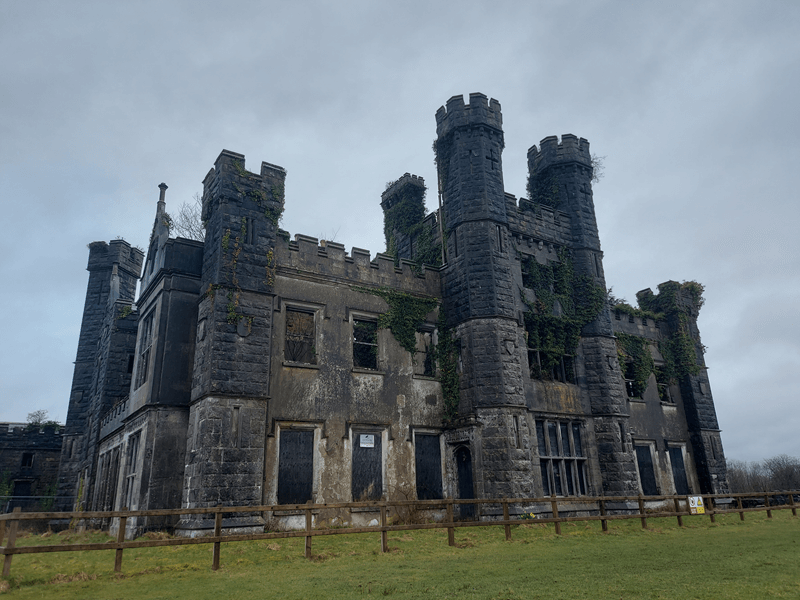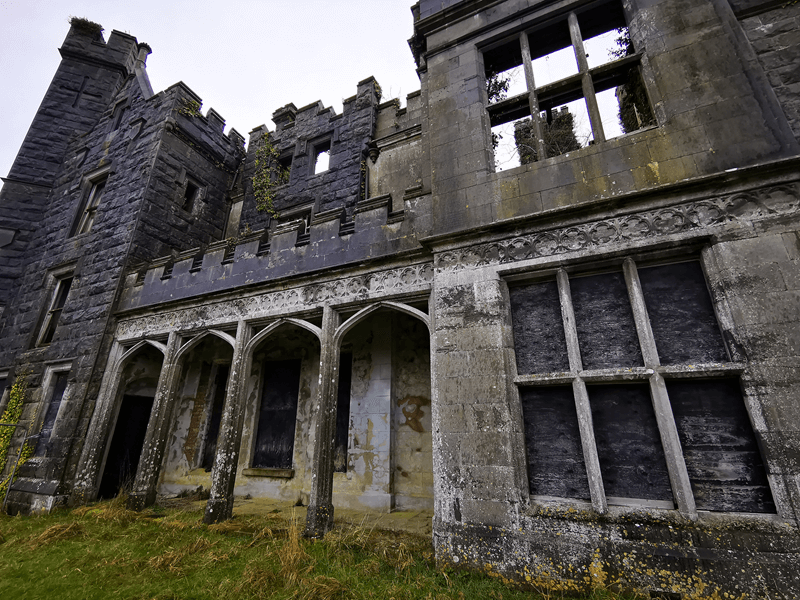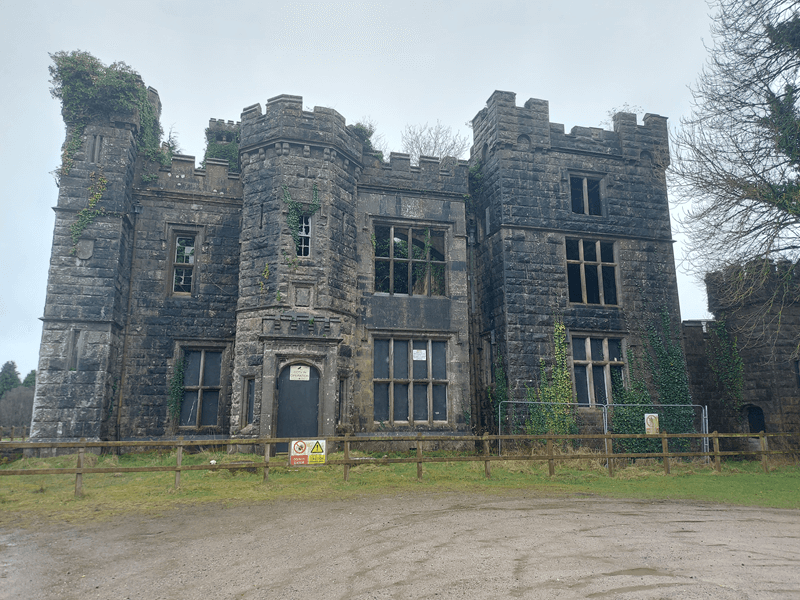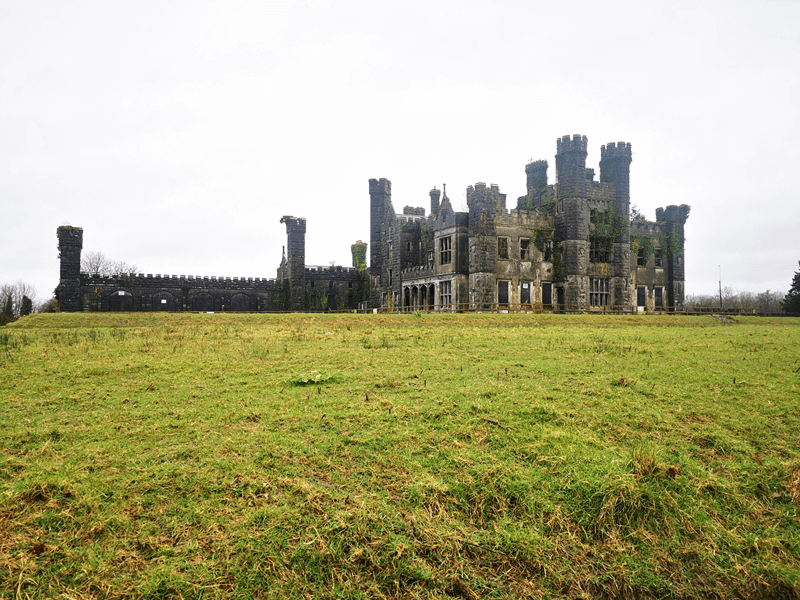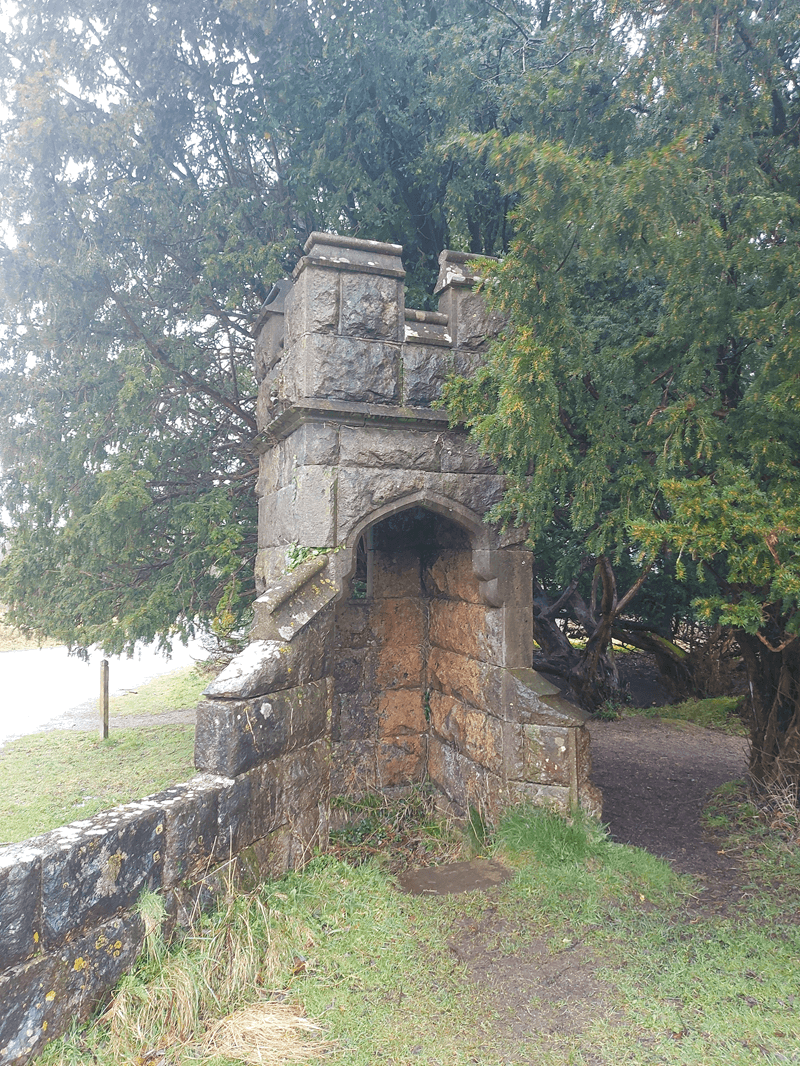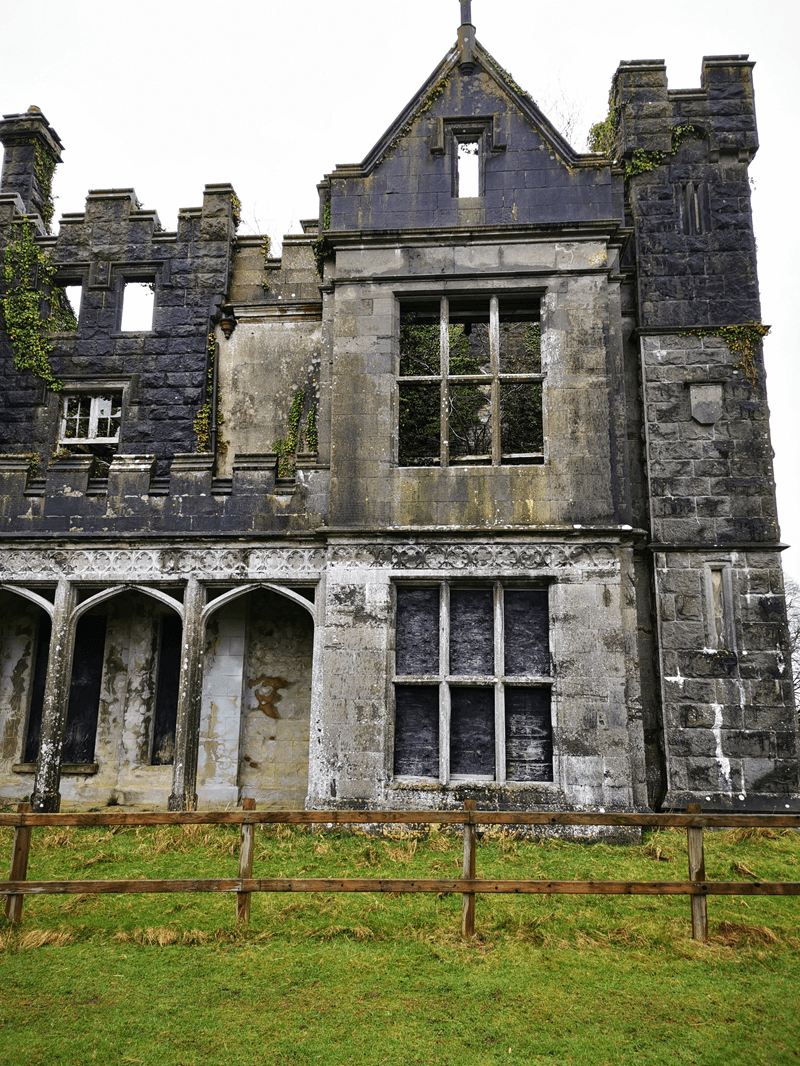History

The visitor can find a lot of interesting information on the panels placed around the castle by Ireland’s Ancient East [1].
According to these panels, in the 16th century, the land where the castle stands was ruled by the O’Reilly family of Breifne, to whom the initial castle belonged [1,2]. During this period, British kings seized lands from the native Irish and granted them to settlers loyal to the crown, in a process that James I called “civilising enterprise”, but it was actually a colonization known as “the plantation of Ireland”, with the settlers named “undertakers” [1].
In 1618, Alexander Sanderson (the ‘u’ was added to the name later), a Scottish mercenary, was granted lands in Cavan and Tyrone [1]. Alexander was succeeded by his son Robert, to whom the estate passed in 1633 [1]. Although the castle was burned after a rebellion by the Irish in 1641, the power of Robert did not end, as he was rewarded for having helped General Oliver Cromwell in reconquering Ireland [1].
From 1688 to 1691, the Catholic King James II fought against the Protestant William of Orange for the crown of Britain and Ireland [1]. Castle Saunderson contributed to provide the scenography to these crucial scenes of the European history. In particular, Robert Sanderson's son, also named Robert, inherited the castle in 1676 and supported William of Orange [1]. As a consequence, in 1689, the castle was once again burned, this time by Lord Galmoy, one of King James's generals [1]. Later, 400 soldiers of the Catholic king were killed in an ambush at Saunderson Castle, while retreating from the Battle of Newtownbutler [1].
Jumping to 1828, Alexander Saunderson, Member of Parliament for Cavan, married Sarah Maxwell, whose prestigious Anglo Irish family descended from the Irish High King Brian Boru and the Scottish hero Robert the Bruce [1]. During the Great Famine of 1845 51, it is reported that Alexander supported his tenants by suspending the rent payments [1].
The original castle underwent major changes through the centuries and the final three-storey country house that we can admire today, with its Tudor Gothic style, was developed starting from 1840 [1-3]. More details on the architecture of castle Saunderson can be found in [2-4].
The estate was then inherited by Edward Saunderson, third eldest son of Alexander and Sarah, who later became “Hero of the Loyalists” [1]. Known for being a great orator, Edward is considered the founder of Irish Unionism, a movement aiming to preserve the British control over Ireland [1]. His main opponent was Charles Stewart Parnell, the “Uncrowned King of Ireland” and promoter of the “Home Rule” (self government of Ireland within the United Kingdom of Great Britain and Ireland) [1]. On the other side, Edward’s speeches were also extremely critical at the British Prime Minister Gladstone [1].
With Edward, we reach the beginning of the 20th century and more turbulent events are going to involve the castle. In 1920, during the Irish War of Independence (1919-21), the castle was first attacked by the IRA, then occupied by English forces, who settled here [1]. The war ended with the signature of the Anglo-Irish treaty (1922), dividing Ireland in a Free State (the future Republic of Ireland) and the Northern Ireland, which was still part of the United Kingdom [1].
As a result, the power of the Saunderson family over these lands ended and Saunderson Castle, located in the Free State, close to the border with Northern Ireland, was abandoned and gradually fell into ruin [1]. The last Saunderson who owned the property, Alexander ("Sandy"), Edward's grandson, also famous for having worked at the Nuremburg Nazi war crimes trials after being a prisoner of war during WWII, intended to restore the castle, but it turned to be too costly and he sold the property in 1977 [1].
Finally, after being for centuries associated to colonialism, since the Good Friday Agreement in 1998, Castle Saunderson became a symbol of reconciliation and mutual respect [1]. In this spirit, in 2012 an International Scout Center has been opened at Castle Saunderson [1].
References
- [1] Discover Ireland, Ireland's Ancient East
- [2] Irish History, Castle Saunderson, Belturbet, Co. Cavan
- [3] The Anglo-Celt, Castle Saunderson "one of Most-at-Risk" heritage building
- [4] The Irish Aesthete, CASTLE SAUNDERSON
Other useful links
- Irish Historic Houses, Castle Saunderson, County Cavan
- Wikipedia, Castle Saunderson
- Landed Estates, Saunderson (Castle Saunderson)
- Wikipedia, Kingdom of Breifne
- Wikipedia, Great Famine (Ireland)
- Wikipedia, Edward James Saunderson
- Wikipedia, Charles Stewart Parnell
- Wikipedia, Irish Home Rule Movement
- Wikipedia, William Ewart Gladstone
- Wikipedia, Good Friday Agreement
